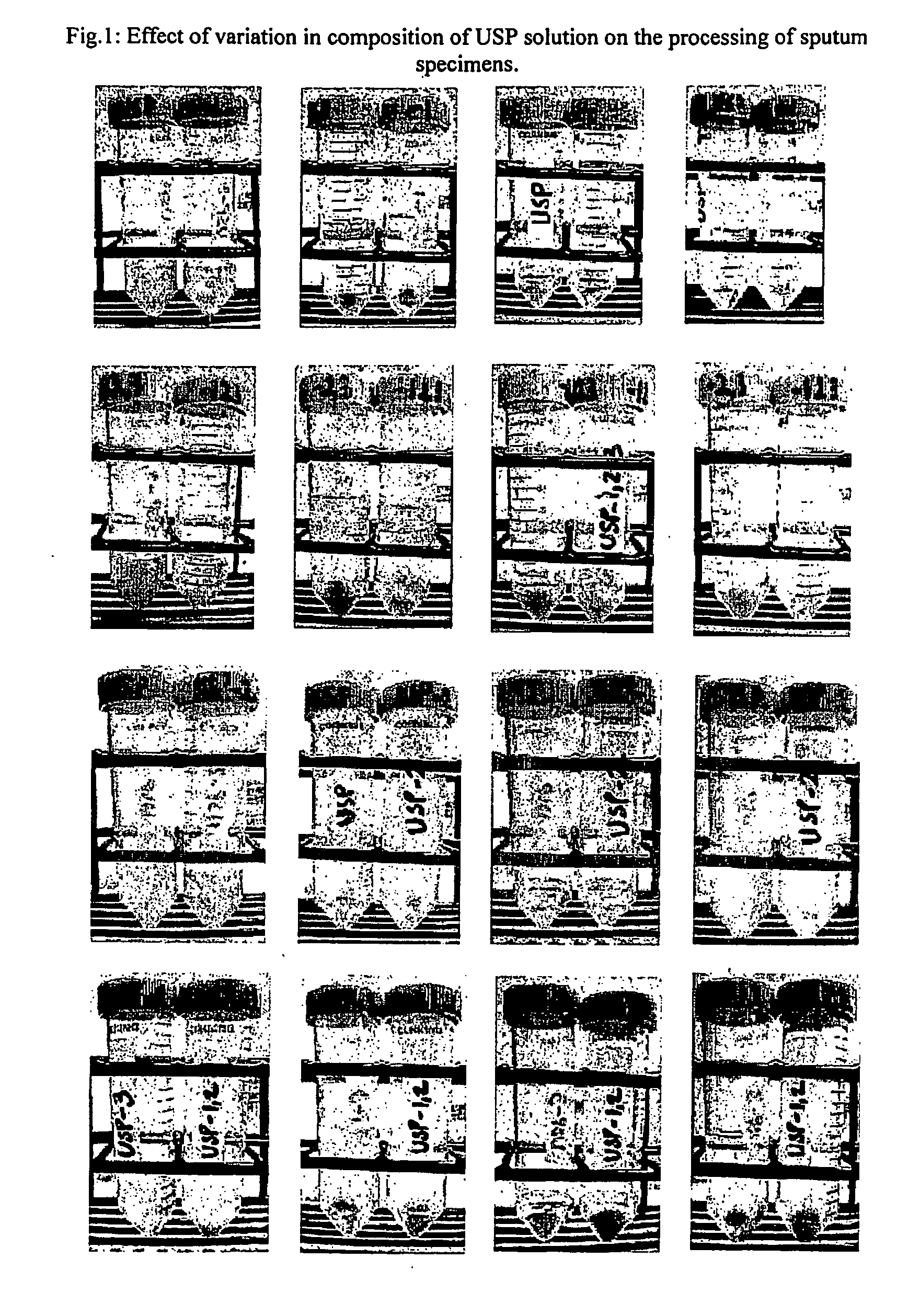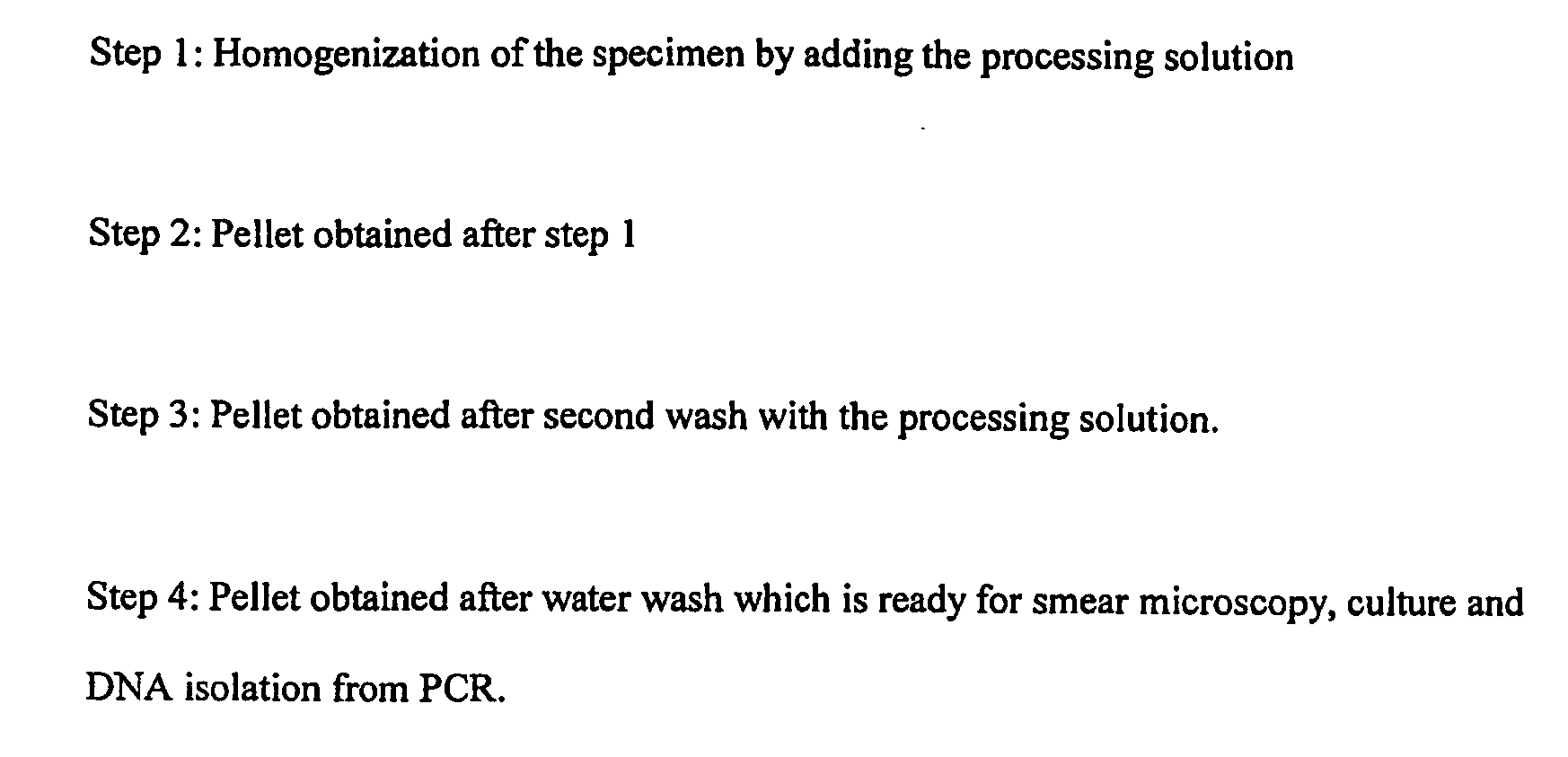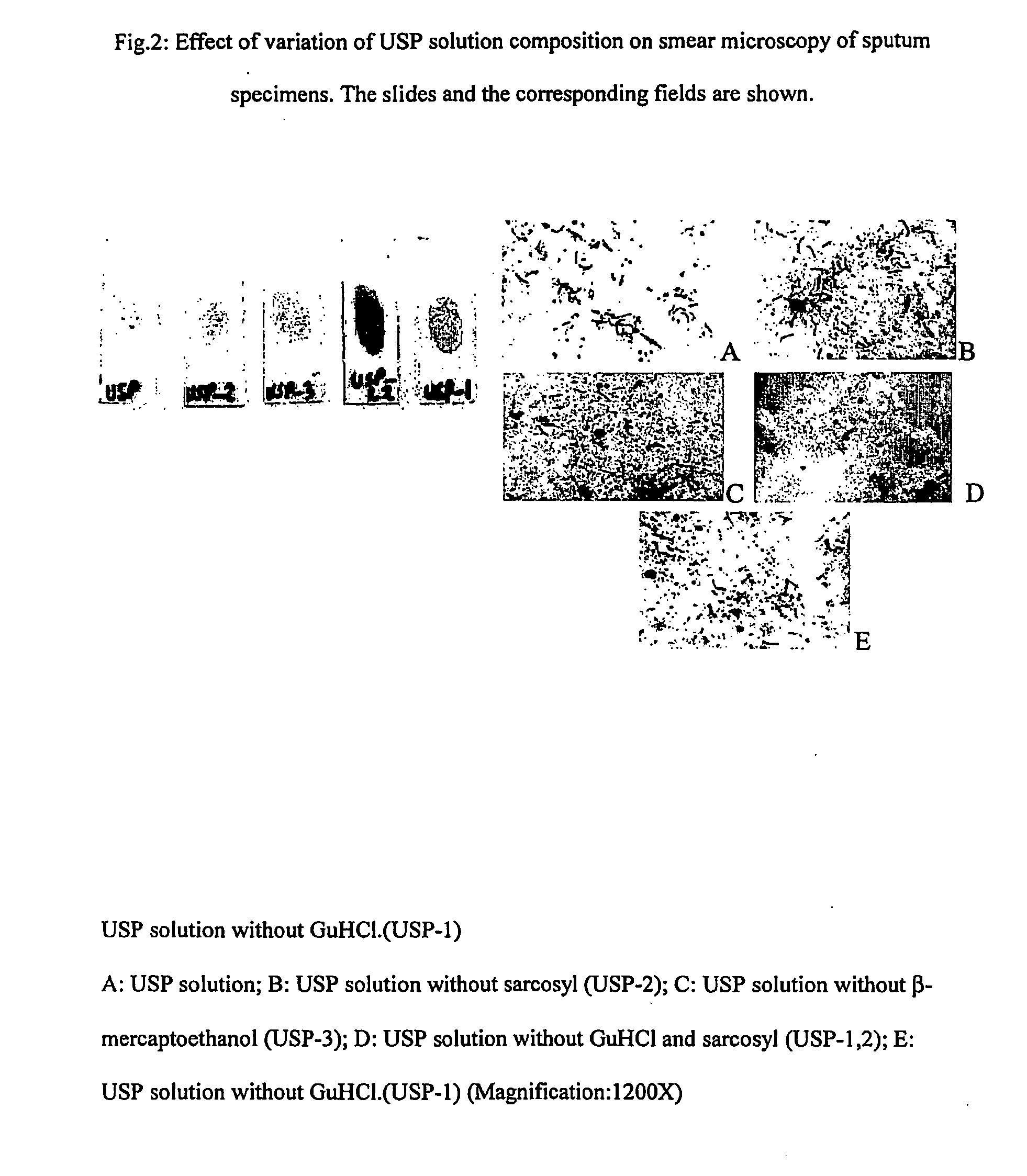Method for diagnosis of tuberculosis by smear microscopy, culture and polymerase chain reaction using processed clinical samples and kit thereof
a tuberculosis and smear microscopy technology, applied in the field of multi-purpose diagnostic methodologies for bacterial infections including tuberculosis, can solve the problems of lack of sensitivity, delay of 46 weeks in arriving at a definitive diagnosis, and unfavorable the action of conventional antibiotics and lytic procedures
- Summary
- Abstract
- Description
- Claims
- Application Information
AI Technical Summary
Benefits of technology
Problems solved by technology
Method used
Image
Examples
Embodiment Construction
[0070] Accordingly, the present invention relates to an effective and economical method of processing clinical samples useful for simple, rapid, safe, sensitive, and accurate diagnosis of bacterial infections using a composition comprising solution 1 consisting of Universal Sample Processing (USP) solution (composed of Guanidinium Hydrochloride (GuHCl) of concentration ranging between 3-6M, Tris-Cl of concentration ranging between 40-60 mM of pH ranging between 7.3-7.7, EDTA of concentration ranging between 20-30 mM, Sarcosyl of concentration ranging between 0.3 -0.8%, beta-mercaptoethanol of concentration ranging between 0.1-0.3 M), Solution 2 consisting of Sodium phosphate of concentration ranging between 65 to 70 mM of pH ranging between 6.7 to 6.8 (optional can be replaced with sterile water), and Solution 3 consisting of Tween 80 of concentration ranging between 0.03 to 0.08%, and Solution A comprising Chelex 100 suspension of concentration ranging between 8-12%, Solution B con...
PUM
| Property | Measurement | Unit |
|---|---|---|
| time duration | aaaaa | aaaaa |
| time duration | aaaaa | aaaaa |
| volumes | aaaaa | aaaaa |
Abstract
Description
Claims
Application Information
 Login to View More
Login to View More - R&D
- Intellectual Property
- Life Sciences
- Materials
- Tech Scout
- Unparalleled Data Quality
- Higher Quality Content
- 60% Fewer Hallucinations
Browse by: Latest US Patents, China's latest patents, Technical Efficacy Thesaurus, Application Domain, Technology Topic, Popular Technical Reports.
© 2025 PatSnap. All rights reserved.Legal|Privacy policy|Modern Slavery Act Transparency Statement|Sitemap|About US| Contact US: help@patsnap.com



